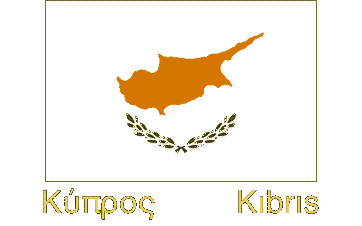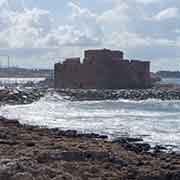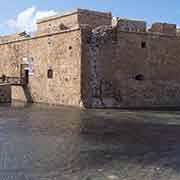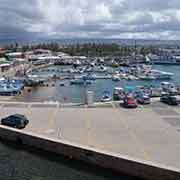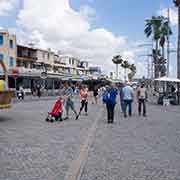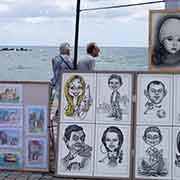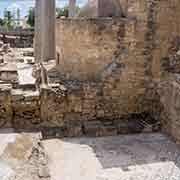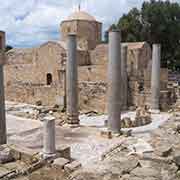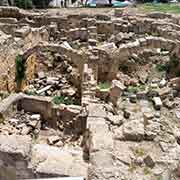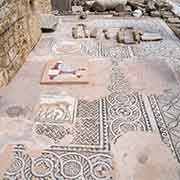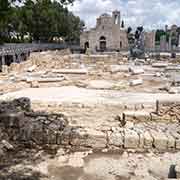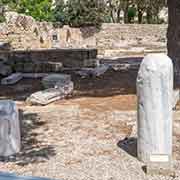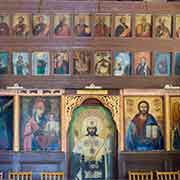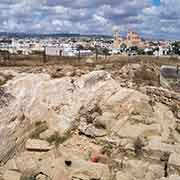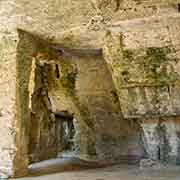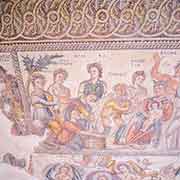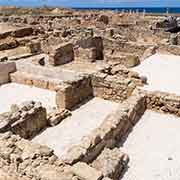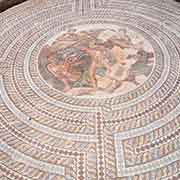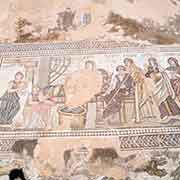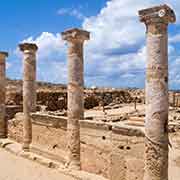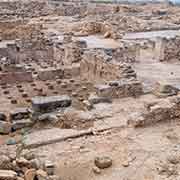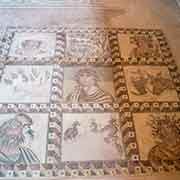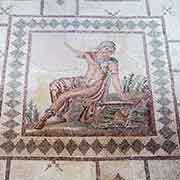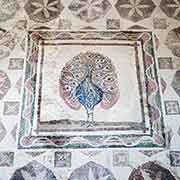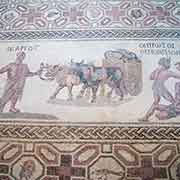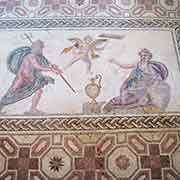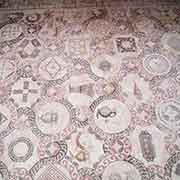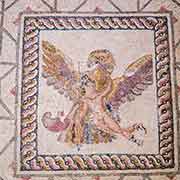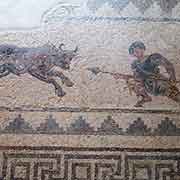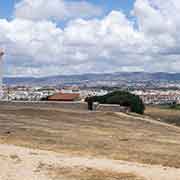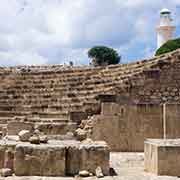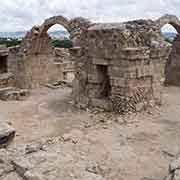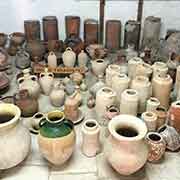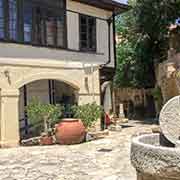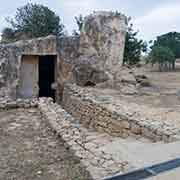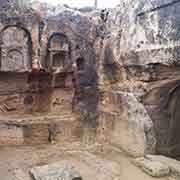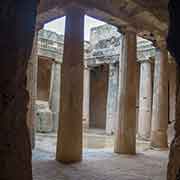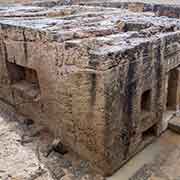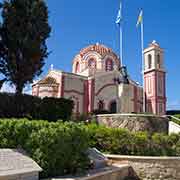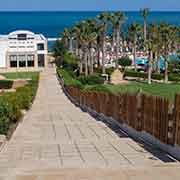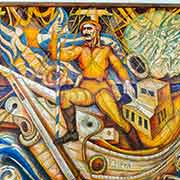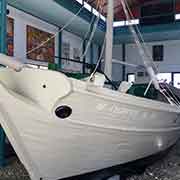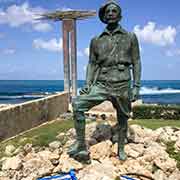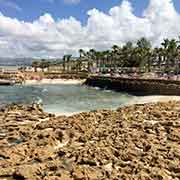Photos of Paphos, the south-west of Cyprus, Cyprus
Paphos, the south-west of Cyprus
Paphos or, in Greek, Páfos (Πάφος) is a city on the southwestern Meditteranean coast of Cyprus and about 50 kilometres west of Limassol. It was founded as New Paphos (Nea Paphos) to distinguish itself from Old Paphos (Palaepaphos), now called Kouklia, 23 kilometres to the east. It was probably founded in 312 BCE by Nicocles, the last King of Palaepaphos and was known as the centre of worship of the goddess Aphrodite. Paphos is now a popular tourist destination with hotels and resorts on the beach.
you may then send it as a postcard if you wish.
The modern city of Paphos is divided into two levels: Pano Paphos, the commercial centre and Kato Paphos, the lower and coastal area with its great archeological sites. Kato Paphos Archaeological Park is a UNESCO World Heritage site, where most of the ancient Greek and, later, Roman city stood. There are large Roman villas with well-preserved mosaic floors. There is the Odeon Amphitheatre, a Roman outdoor theatre. Further north, the Agiou Lambrianou Catacombs and a necropolis known as the Tombs of the Kings, underground tombs carved out of solid rock, some dating back to the 4th century BCE.
Overlooking Paphos harbour is Paphos Castle, originally built as a Byzantine fort and rebuilt after an earthquake by the Frankish Lusignans. They ruled Cyprus at the time, during the thirteenth century. In 1570 it was dismantled by the Venetians but restored and strengthened by the Ottomans. East from the harbour, the mosaic floor and columns of the 4th century Christian Chrysopolitissa basilica, the largest Early Byzantine basilica on the island, can be found. It was ultimately destroyed during Arab raids in 653. Just north of it is St. Paul’s Pillar, where, according to tradition, the people of Paphos tied St. Paul and whipped him; he did visit Paphos, according to the Bible.
About five kilometres north of Paphos is Chloraka. On the night of 10 November 1954, General Georgios Grivas came ashore on St. George beach, starting his struggle for “Enosis”, the union of Cyprus with Greece and getting rid of the British. Here is a museum with the “Agios Georgios”, the boat used to import ammunition for the EOKA Liberation Struggle in 1955-59. A statue of Grivas (or Dhigenis, his nickname during the war) is on the beach.


